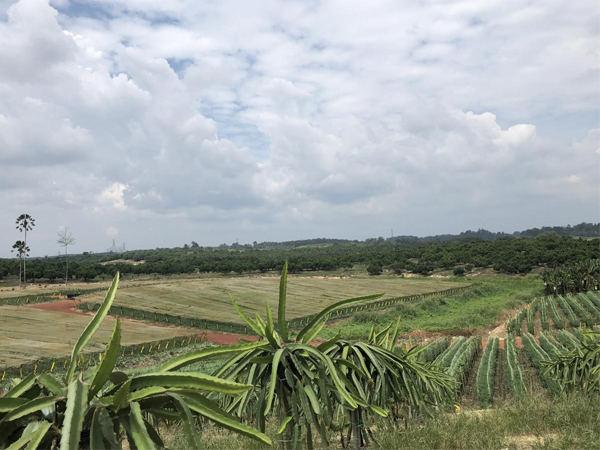Search Product
Search here for what you are looking for:
Search here for what you are looking for:

Botanical pesticides: A new trend complementing conventional chemical pesticides
Botanical pesticides have the advantages of being environmentally friendly, generally low in toxicity, and resistant to pests and diseases in crop pest control. They are superior products used in combination with traditional chemical pesticides.
I. Introduction to plant resources
1. Main types: insecticidal plants, antibacterial plants, herbicidal active plants, nematicidal plants, antiviral plants
2, the main mode of action
1 contact and stomach poison (pyrethrin, nicotine, physostigmine, etc.)
2 antifeeding (Azadirachtin)
3 lure or avoid (mainly plant essential oils)
4 inhibit growth and development (plant-derived insect hormones)
5 Photoactivated toxicity (Yinchen diacetyl, furocoumarin)
6 bactericidal and bacteriostatic effects (aichisin, osthole)
7 different strains of gram
3. The main active ingredients
1 alkaloid (nicotine, matrine)
2 glycosides (tea saponin, bitter lignin)
3 carboxylate (pyrethroid)
4 flavonoids (rotopone)
5 terpenes (azadirachtin, celangulin)
6 coumarins (osthole)
7 essential oils (menthol oil, cinnamon essential oil)
8 toxic proteins (ricin)

Second, the main plant-derived pesticide varieties
1. Oxymatrine: a single dose is 0.1% SL; the mixed preparation has 0.5%, 0.6% oxymatrine·bone lactone aqueous solution. It can be used to control flower mites and cruciferous vegetables, cabbage worms and mites.
2. Rotenone: 2.5%, 4%, 7.5% EC in a single dose; 5% pyrethrin and rotenone EC in a mixed preparation. It can be used to control vegetable cabbage worm, aphid, diamondback moth, Spodoptera litura, citrus tree, and cotton bollworm.
3. Hundreds of base: The preparation is 1.1% basal, alizarin and nicotine EC, which can be used to control the larvae, the green leaf mites and the cruciferous vegetable aphids, cabbage caterpillars and diamondback moths.
4. Carvacrol: The preparation is 5% acrylic acid and carvacrol SL, which can be used for controlling cucumber gray mold and rice blast.
5, cucurbitine: the preparation is 0.5% SL, can be used to control cotton bollworm, cotton aphid and cruciferous vegetable cabbage caterpillar.
6. blood root base: the preparation is 1% WP, can be used to control the bean mites, cruciferous vegetable cabbage caterpillars, pear tree hibiscus and apple tree two spotted spider mite, aphids.
7, arboreal-III: the preparation is 0.1% EC, can be used to control cruciferous vegetable cabbage caterpillars.
8. celangulin: the preparation is 1% EC, can be used to control cruciferous vegetable cabbage caterpillars.
9. osthole: the preparation is 0.4% EC, can be used to control cruciferous vegetable cabbage caterpillars and tea tree tea.
10. matrine: a single dose of 0.2%, 0.26%, 0.3%, 0.36%, 0.5% EC, 0.3% EW, 0.36%, 0.38%, 1% SL, 0.3% SL, 0.38%, 1.1% powder; The mixed preparation has 1% matrine and azadirachtin EC, 0.2% matrine SL + 1.8% rotenone EC tank mix, 0.5%, 0.6%, 1.1%, 1.2% matrine and nicotine SL, 0.6 % matrine and berberine SL.
Can be used to control vegetable land small tiger, cruciferous vegetable cabbage caterpillar, diamondback moth, aphid, leek, cucumber red spider, aphid, tea tree tea caterpillar, tea ruler, tobacco tobacco budworm, haze, wheat, millet Sticky worms, cotton red spiders, citrus tree stalks, pear tree scab, apple tree red spider, scutellaria, ring rot.
11. Eugenol: a single dose of 0.3% SL, a compounding preparation of 2.1% eugenol and carvacrol SL, can be used to control tomato gray mold.
12. Azadirachtin: the preparation is 0.3%, 0.5% EC, can be used to control the cruciferous vegetable Plutella xylostella.
13. Nicotine: Single dose is 10% EC; mixed preparation has 0.84%, 1.3% strychnine · nicotine EC, 2.7% purine base · nicotine SC, 27.5% nicotine · oleic acid EC, 10% Pyrethrin·nicotine EC, 9% capsaicin·nicotine ME, 15% ricinoleic acid·nicotine EC.
It can be used for controlling cruciferous vegetables, cabbage caterpillars, aphids, citrus tree stalks, wheat aphids, armyworms, apple tree scutellaria, cucumber red spiders, locusts, kidney bean mites, cotton bollworms, locusts, tobacco budworms, Mustard aphids.